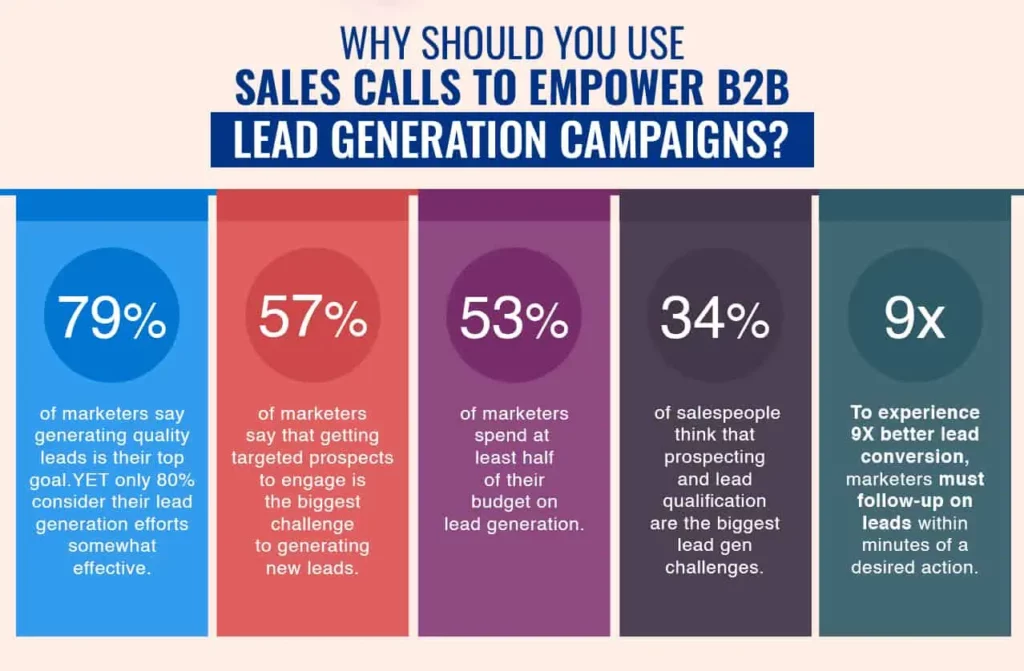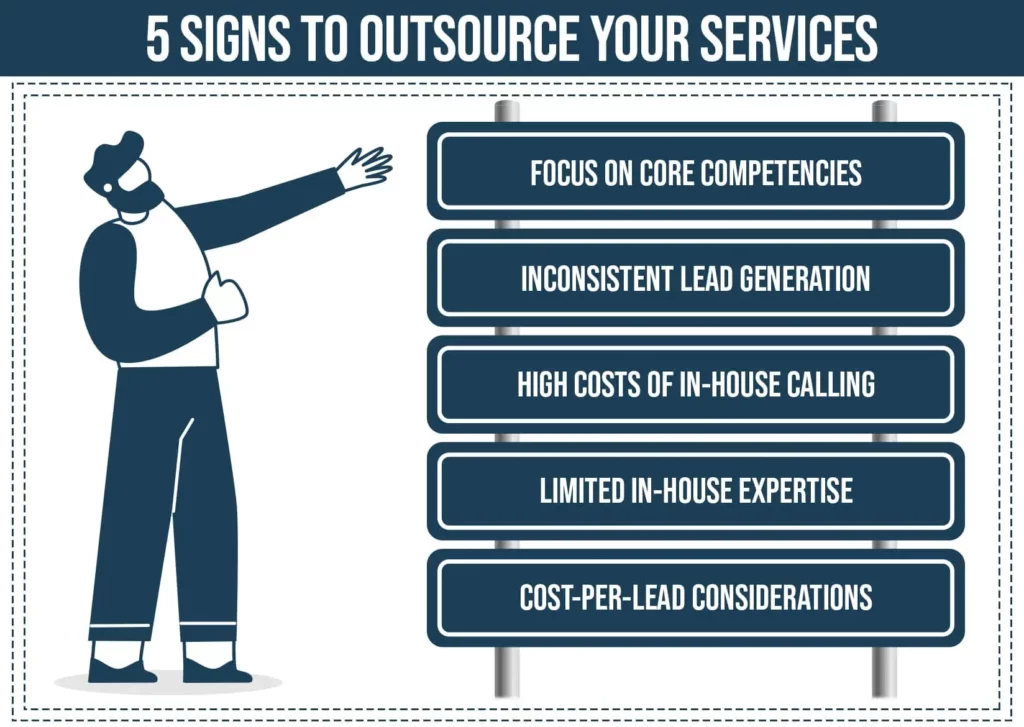Attempting to locate and engage with decision-makers and influencers becomes challenging when dealing with an inaccurate or outdated list. For sales reps eager to close the next deal, investing time in such situations may feel like a waste. How can B2B lead generation yield a better return on investment? An article titled ‘Digging for Gold’ provides some essential tips for successful prospecting, serving as a good starting point. However, we believe there’s room to enhance and enrich these strategies.
Develop detailed buyer personas –
Don’t expect your sales team to cold call without a clear idea of who their target audience is. Instead, create specific buyer personas that give your sales reps a clear picture of who makes an ideal customer.,
Developing detailed buyer personas involves creating data-driven representations of your ideal customers. These personas provide insights into the characteristics, behaviors, preferences, and challenges of your target audience. Here are the steps to develop detailed buyer personas:
- Conduct Research:
Customer Interviews: Interview current customers to gather information about their backgrounds, goals, challenges, and purchasing decisions.
Surveys: Use surveys to collect quantitative data on preferences, demographics, and behaviors.
- Analyze Customer Data:
Use analytics tools to analyze website, social media, and other relevant data to understand customer interactions and behavior.
- Identify Patterns:
Look for patterns and commonalities in the data. Identify shared characteristics, pain points, and goals among your customers.
- Create Persona Profiles:
Develop individual persona profiles based on the gathered data. Each persona should represent a specific segment of your target audience.
Include details such as demographics, job roles, company size, challenges, goals, preferred communication channels, and objections.
- Document Behaviors and Preferences:
Outline the typical behaviors and preferences of each persona throughout their customer journey.
Consider how they search for information, their decision-making process, and their preferred content types.
- Highlight Pain Points and Goals:
Clearly define the challenges or pain points your personas face and the goals they aim to achieve.
This helps tailor your messaging to address their specific needs.
- Include Buying Motivations:
Understand what motivates each persona to make a purchasing decision. This can include factors like cost savings, efficiency improvements, or status enhancement.
- Validate Personas:
Share the personas with your team and gather feedback.
Validate the personas by ensuring they accurately reflect your actual customer base.
- Utilize Personas Across Departments:
Implement the use of personas in various departments such as marketing, sales, and customer service.
Align your strategies and communications with the identified buyer personas.
- Update Personas Regularly: •Markets and customer behaviors change over time. Regularly update your personas to ensure they remain accurate and relevant.
By following these steps, you can create detailed buyer personas that serve as valuable tools for understanding and catering to the needs of your target audience.

Watch for signs of robotic activity.
Even your most energetic sales representative might fall into robotic communication, mechanically listing the product benefits in a monotonous tone and failing to capture the potential prospect’s attention. On the flip side, a composed representative could become frustrated as the day progresses, eventually adopting a pushy salesperson tone. Encourage your team to engage in authentic conversations, speaking to people as they would with a friend, fostering genuine relationships.
Sales reps need to avoid engaging in robotic activities for several reasons:
- Authenticity: Robotic activities often lack authenticity and a human touch. Building genuine relationships with customers is crucial in sales, and robotic behavior can come across as impersonal and insincere.
- Customer Experience: Customers appreciate personalized and tailored interactions. Robotic activities can lead to a poor customer experience as they may feel like just another number in a system, rather than receiving individualized attention.
- Trust Building: Trust is a fundamental component of successful sales relationships. Robotic interactions may erode trust as customers may question the sincerity and credibility of the sales rep.
- Adaptability: Sales situations can be dynamic, and a one-size-fits-all robotic approach may not effectively address the unique needs or concerns of each customer. Sales reps need to be adaptable and responsive.
- Communication Skills: Engaging in conversations that feel robotic can hinder effective communication. Sales reps need to be skilled communicators, actively listening to customers, understanding their needs, and responding in a way that resonates with them.
- Differentiation: In a competitive market, differentiation is key. Sales reps who can provide a distinct and personalized experience set themselves apart from competitors who rely on more robotic approaches.
- Emotional Intelligence: Sales often involves navigating emotions and understanding the customer’s perspective. Robotic activities may lack emotional intelligence, making it challenging to connect with customers on a deeper level.
- Customer Retention: Building long-term relationships is as important as closing a sale. Robotic interactions are less likely to contribute to customer loyalty and retention.
In summary, avoiding robotic activities allows sales reps to connect with customers on a human level, tailor their approach to individual needs, and build trust and rapport, ultimately leading to more successful and sustainable sales relationships.
Embrace the notable rejection. There are moments when a potential buyer proves elusive or expresses disinterest, which can be disheartening. However, when faced with a remarkable rejection, it’s essential to celebrate. Maintaining a sense of humor in your cold calling endeavors can help you laugh off a rejection, ensuring that one negative encounter doesn’t overshadow the overall tone of the day.
Celebrating the grand rejection in sales may seem counterintuitive, but it can be a valuable mindset for several reasons:
- Learning Opportunity: Rejections provide valuable feedback. Celebrating them encourages salespeople to view each rejection as a learning opportunity. Understanding why a prospect said no can lead to insights that help refine future pitches and strategies.
- Resilience Building: Sales is a field with its fair share of rejection. Celebrating rejection fosters resilience. It helps salespeople develop a mindset that perceives rejection not as a failure but as a step toward improvement.
- Shift in Perspective: Instead of dwelling on failure, celebrating rejection prompts a shift in perspective. It encourages salespeople to see rejection as a natural part of the sales process rather than a personal setback.
- Motivation for Improvement: By celebrating rejection, salespeople are motivated to continuously improve their skills. They may seek additional training, refine their approach, or find creative solutions to address common objections.
- Embracing Challenges: Sales professionals who celebrate rejection are more likely to embrace challenges. They understand that facing rejection is an inherent part of pursuing ambitious goals, and it doesn’t deter them from pursuing success.
- Positive Culture: Fostering a culture where rejection is acknowledged and celebrated promotes a positive environment. It helps reduce the stigma associated with rejection and encourages open communication about challenges and setbacks.
- Team Building: When sales teams celebrate rejection together, it creates a sense of camaraderie. Team members can share experiences, provide support, and collectively brainstorm strategies to overcome common objections.
- Focus on the Long Term: Celebrating rejection reinforces the idea that success in sales is a long-term endeavor. It discourages short-term thinking and encourages salespeople to stay committed to their goals despite temporary setbacks.
- Reducing Fear of Failure: Fear of rejection can paralyze salespeople. Celebrating rejection helps normalize the idea that not every prospect will convert into a customer. This, in turn, reduces the fear of failure and allows salespeople to approach their work with greater confidence.
In essence, celebrating the grand rejection is about cultivating a growth mindset, resilience, and a positive attitude toward challenges in the sales profession. It contributes to continuous improvement and long-term success.

Know when it’s time to outsource. While you might perceive cold calling as an engaging activity for your team in their lead development efforts, the reality is that most salespeople dislike cold calling, if fact, many do not excel at it at all. If your goal is to adopt a cost-effective approach and enable your sales reps to focus on actionable leads prepared for personal or phone/video interactions, it is probably time to bring in the expertise of professionals.
Knowing when it’s time to outsource cold calling activities is crucial for optimizing your sales strategy. Here are some indicators that may suggest outsourcing is the right choice for your business:
- Focus on Core Competencies: If your team’s primary strengths lie in other areas of the sales process or core business functions, outsourcing cold calling allows your in-house team to concentrate on what they do best.
- Inconsistent Lead Generation: If your current cold calling efforts result in inconsistent lead generation and you struggle to maintain a steady flow of qualified leads, outsourcing can provide a more reliable and scalable solution.
- High Costs of In-House Calling: Running an in-house cold calling operation can incur significant costs, including salaries, benefits, training, and technology expenses. Outsourcing may offer a cost-effective alternative.
- Limited In-House Expertise: If your internal team lacks the specialized skills required for effective cold calling, outsourcing to professionals with expertise in this area can enhance your results.
- Geographical Expansion: If your business is expanding into new geographical regions or markets, outsourcing allows you to tap into expertise familiar with those specific markets and customer behaviors.
- Scalability Challenges: If your business experiences fluctuations in call volume or requires rapid scalability, outsourcing provides the flexibility to adjust resources based on demand without the challenges of hiring and training new staff.
- Time Constraints: If your internal team is stretched thin and doesn’t have the time to dedicate to cold calling, outsourcing can ensure that this essential aspect of lead generation receives the attention it deserves.
- Technology and Tools: Outsourcing providers often have access to advanced technologies and tools for cold calling, which can be expensive to implement in-house. This includes CRM systems, analytics, and calling platforms.
- Language and Cultural Expertise: If your target audience spans different languages or cultures, outsourcing to a provider with multilingual and culturally sensitive agents can improve communication and understanding.
- Performance Metrics and Reporting: Outsourcing partners typically provide detailed performance metrics and reporting, offering insights into the effectiveness of cold calling campaigns. This transparency can be valuable for optimizing strategies.
- Cost-Per-Lead Considerations: Evaluate the cost-effectiveness of outsourcing in comparison to in-house efforts. If an outsourcing partner can deliver leads at a lower cost per lead, it may make financial sense to consider this option.
When considering the outsourcing of cold calling activities, carefully evaluate your specific requirements, budget limitations, and long-term business objectives. A carefully selected outsourcing partner can supplement your preliminary sales effort and contribute to the success of your lead generation initiatives.
Entrust your telemarketing activities to a proficient team, well-versed in the discussed areas, capable of providing essential information to elevate the success of your top-of-funnel leads. Allow your lead generation partner to:
- Identifying decision-makers and influencers
- Insights into budget availability
- Details about their decision-making process, including the expected decision date.
- Understand the challenges prospects are addressing (which your product may potentially solve)
If you’re interested in learning more about the advantages of outsourcing your B2B lead generation strategy, feel free to contact us at Blue Valley Marketing.
Last Updated on January 13, 2024 by Ronen Ben-Dror

